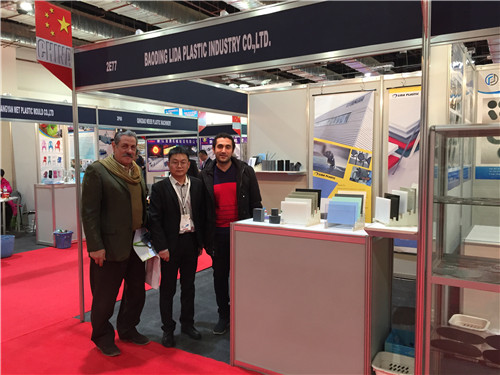Dec . 12, 2024 01:12 Back to list
PPR Pipe Fittings for Efficient and Reliable Plumbing Solutions
Understanding PPR Pipe Fittings A Comprehensive Guide
PPR pipe fittings have gained significant popularity in the plumbing and construction industries due to their unique properties and advantages. Polypropylene Random Copolymer (PPR) is a thermoplastic material that is well-regarded for its durability, chemical resistance, and lightweight nature. This article delves into the intricacies of PPR pipe fittings, including their characteristics, applications, and installation techniques.
Characteristics of PPR Pipe Fittings
PPR pipe fittings are manufactured from a type of polypropylene that is specifically designed for high-performance plumbing systems. Here are some notable characteristics of PPR materials
1. Durability PPR fittings are known for their resistance to impact and stress. Their robust nature makes them less likely to crack or break compared to traditional PVC or metal fittings. This durability leads to a longer lifespan, making them a cost-effective choice in the long run.
2. Chemical Resistance One of the most significant advantages of PPR fittings is their resistance to various chemicals. They can withstand acids, alkalis, and salt solutions, making them suitable for applications in chemical industries and laboratories.
3. Temperature Resistance PPR pipes can handle temperatures up to 95 degrees Celsius (203 degrees Fahrenheit) with ease. This makes them ideal for both hot and cold water systems, ensuring that they maintain their structural integrity under varying temperatures.
4. Corrosion-Free Unlike metal fittings, PPR pipe fittings do not corrode over time. This property is particularly important in water supply systems, where corrosion can lead to harmful contaminants leaching into the water supply.
5. Lightweight PPR fittings are significantly lighter than metal options, leading to easier handling and installation. This lightweight property can also reduce transportation costs and labor expenses during installation.
Applications of PPR Pipe Fittings
PPR pipe fittings are used in a wide range of applications, including
1. Hot and Cold Water Systems PPR is frequently used in domestic plumbing for both hot and cold water supply due to its temperature resistance and resilience.
ppr pipe fitting

2. Heating Systems The ability of PPR pipes to withstand high temperatures makes them suitable for heating systems, including underfloor heating.
3. Industrial Applications Due to their chemical resistance, PPR fittings are also utilized in various industrial applications, including chemical processing facilities and wastewater treatment plants.
4. Agriculture PPR pipes are used in irrigation systems to transport water efficiently. Their lightweight nature and resistance to environmental factors make them an excellent choice for agricultural applications.
5. Construction In the construction sector, PPR fittings are used in plumbing and heating systems in residential, commercial, and industrial buildings.
Installation Techniques
Installing PPR pipe fittings requires specific techniques to ensure a secure and leak-free connection. Below are some standard methods used in the installation process
1. Heat Fusion This is one of the most common methods for joining PPR fittings. Heat fusion involves heating the ends of the pipe and fitting until they soften, then quickly pressing them together until they cool and form a solid bond.
2. Socket Fittings PPR fittings often come with socket ends that allow for easy installation. The pipe is inserted into the socket fitting, and then heat fusion is applied to create a strong bond.
3. Threaded Connections Although not as common, PPR fittings can also be threaded for certain applications. However, care must be taken to use compatible materials to prevent leaks.
4. Support and Spacing When installing PPR systems, it’s essential to provide proper support to the pipes to prevent bending and sagging. This ensures that the system remains functional and minimizes stress on the joints.
Conclusion
In conclusion, PPR pipe fittings represent a modern solution to plumbing challenges, combining durability, chemical resistance, and versatility. Their unique characteristics and wide range of applications make them a preferred choice for many industries. As technology advances, the importance of reliable and efficient plumbing solutions like PPR pipe fittings will continue to grow, offering a sustainable future for construction and maintenance in various sectors. Whether you are a homeowner looking to install a plumbing system or an industry professional seeking durable materials, PPR fittings are undoubtedly a worthy consideration.
-
High-Quality PPR Pipes and Fittings Durable ERA PPR & PVC PPR Solutions
NewsJul.08,2025
-
Black HDPE Cutting Board - Durable, Non-Porous & Food Safe HDPE Plastic Cutting Board
NewsJul.08,2025
-
High-Quality CPVC Panel Durable HDPE & PVC Panels Supplier
NewsJul.08,2025
-
Double PE Welding Rod Supplier - High Strength, Durable & Versatile Welding Solutions
NewsJul.07,2025
-
High-Quality PVC-O Pipe Supplier Durable 75mm PVC Pipe & Connections Leading PVC Pipe Company
NewsJul.07,2025
-
HDPE Drainage Pipe Supplier – Durable & Corrosion-Resistant Solutions
NewsJul.06,2025

